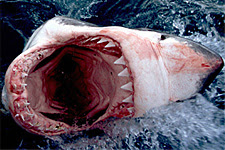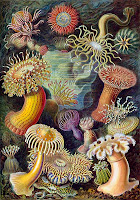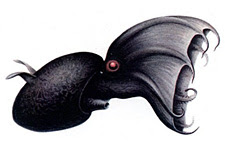 ‘Living Fossil’ is often a term applied to an animal that has a fossil record very far back in time but no close living relatives. This is a loose definition and taxonomists will argue about its specifics but we aren’t going to hash it out.
‘Living Fossil’ is often a term applied to an animal that has a fossil record very far back in time but no close living relatives. This is a loose definition and taxonomists will argue about its specifics but we aren’t going to hash it out.
 I Was Supposed To Go See James Watson Talk Today ...
I Was Supposed To Go See James Watson Talk Today ......and quite frankly I am pretty pissed off that his lectures have been cancelled. James Watson...
 Twins: Identical, Mirror Images, Fraternal And Chimeras
Twins: Identical, Mirror Images, Fraternal And ChimerasCloning is not a human invention; nature has been creating clones for millions of years, among...
 Why Does My Baby Have A Tail?
Why Does My Baby Have A Tail?As I’m having a baby my mind has recently been turned to thoughts of the very weird and wonderful...
 Arrogant Scientists Battle To Represent All Of Humanity
Arrogant Scientists Battle To Represent All Of HumanityAmerican paleontologist Edward Drinker Cope, died on 12 Apr 1897. Cope is best remembered for his...





 Horizon: My Pet Dinosaur was broadcast on BBC Two on 13 March at 21:00GMT. The idea behind the program is what would have happened if the dinosaurs hadn’t gone extinct? This sounds like a fantastic idea for a program and I am all for popularizing science, I believe public interest in scientific research is important. But some of these popularizations go to far; there are bound to be small anatomical mistakes in TV shows, even some hypotheses based on limited evidence, but what I hate is unreined wild speculation.
Horizon: My Pet Dinosaur was broadcast on BBC Two on 13 March at 21:00GMT. The idea behind the program is what would have happened if the dinosaurs hadn’t gone extinct? This sounds like a fantastic idea for a program and I am all for popularizing science, I believe public interest in scientific research is important. But some of these popularizations go to far; there are bound to be small anatomical mistakes in TV shows, even some hypotheses based on limited evidence, but what I hate is unreined wild speculation.
 Its deep velvety black colour, huge red eyes and a webbing of skin connecting eight arms earned this animal the name Vampyroteuthis infernalis, which literally translated means ‘Vampire squid from hell’. It is a small, deep-sea animal, neither an octopus or a squid but a relative and phylogenetic relic or living fossil first described in 1903 by Carl Chun.
Its deep velvety black colour, huge red eyes and a webbing of skin connecting eight arms earned this animal the name Vampyroteuthis infernalis, which literally translated means ‘Vampire squid from hell’. It is a small, deep-sea animal, neither an octopus or a squid but a relative and phylogenetic relic or living fossil first described in 1903 by Carl Chun.
 Coelacanths are lobe-finned fish, which vary in size but can reach up to 6.4 feet in length and weigh up to 176 pounds. Scientists have inferred that they can live 80 to 100 years. Their closest living relatives are lungfish and as fossils they can be readily identified by their distinctive ‘tail flag’. They were long thought to be extinct because their fossil record seems to disappear quite abruptly along with the dinosaurs and many other creatures at end of the Cretaceous period, 65 million years ago.
Coelacanths are lobe-finned fish, which vary in size but can reach up to 6.4 feet in length and weigh up to 176 pounds. Scientists have inferred that they can live 80 to 100 years. Their closest living relatives are lungfish and as fossils they can be readily identified by their distinctive ‘tail flag’. They were long thought to be extinct because their fossil record seems to disappear quite abruptly along with the dinosaurs and many other creatures at end of the Cretaceous period, 65 million years ago. 


